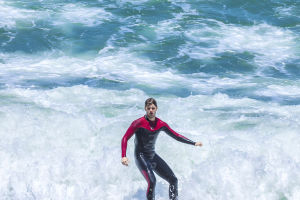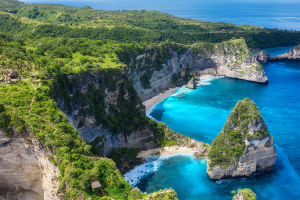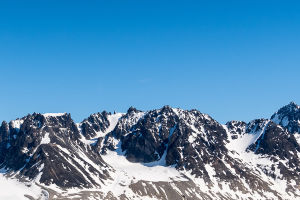The natural setting is unique, consisting of tall stone pillars and cliffs that form a series of breathtaking landscapes. This monument valley is located on the border of Utah and Arizona, Monument Valley is one of the most iconic sites in the American West.
Monument Valley is an area of giant isolated peaks formed by sandstone in the Colorado Plateau. These sandstone peaks look like monuments, hence the name. It is a majestic, sweeping landscape that has been the setting for many movies, such as Forrest Gump and Mission Impossible 2.
The park is located on the border between Arizona and Utah and within the Navajo Nation Reservation, which was established in 1958 by the Navajo Indians living here. It is therefore an Indian reserve and not a U.S. national park.
The Navajo Native American Reservation occupies most of this area and is the largest Indian reservation in the United States. The Navajo people are a testament to the history of this ancient land.
As you enter Navajo territory, the wilderness of red sandstone fills the landscape, and cell phone reception becomes intermittent. Beneath the silence of the isolated peaks, you can see small, simple houses where the Navajo Indians live in their communities.
It is said that 60 percent of the communities still do not have access to water or electricity. The vast majority of the Indian reservations are remote, and their local "fragmentation" is so great that it is difficult to form a whole.
Development has also been slow due to a lack of funding and economic projects. With the wilderness intact, tourism and gaming are the main industries in the area.
The Navajo Indians have their language, Navajo. It is a language with extremely complex grammar, unique pronunciation, and inherent secrecy. The Navajo people are still living in a barren and difficult environment and face many problems, such as the disappearance of their language, but they have never given up on preserving their Indian culture.
Many skilled Navajo artists are working to keep the unique Indian culture alive through various art forms. If you come across one of these artworks on the side of the road or in one of the local stores, buy one to take home and help the Indians preserve their cultural heritage.
Admission to Monument Valley Park is $20, and you cannot use the National Park Pass to enter the park. The park closes at 4:00 PM, and you will not be allowed to enter after 2:00 PM because the scenic drive inside is limited to 2 hours.
The entire route is 17 miles, but it is all sandy roads, making it challenging to drive. If you do not have a 4-wheel drive, you can also charter a guided tour in the park for 1.5 hours or 2.5 hours. There are also horseback tours available for a fee based on distance, hot air balloons or small plane rides from May to October.
For a more in-depth experience, you can join a Navajo cultural tour, where you will be guided through the sites during the day, eat special meals, sing and dance with the tribesmen in the evening, and stay in a Hogan hut at the end.
In addition to driving around, you can also hike the Wildcat Trail, a 3-mile loop around West Glove Mountain in the park. To experience other trails, you will have to purchase a permit at the visitor center, but only for daytime use.
For those who have enough time, you can also purchase a camping permit and stay overnight to watch the stars and enjoy the sunrise, away from the pollution of the city's light sources. The Milky Way is very common, and the light in the early morning can map out another aspect of Monument Valley.
U-163 is the only highway leading to Monument Valley, and it is also the place where Forrest Gump stopped after running non-stop for more than three years in Forrest Gump. So many people take photos on this highway to commemorate the occasion.
Since this place belongs to the desert climate, the temperature in summer is as high as 38 degrees, so the best viewing season is spring and autumn, as well as the evening Monument Valley will look more stunning because it is bathed in the evening sun, following the light to produce a variety of different colors, which is the best time to see it.


